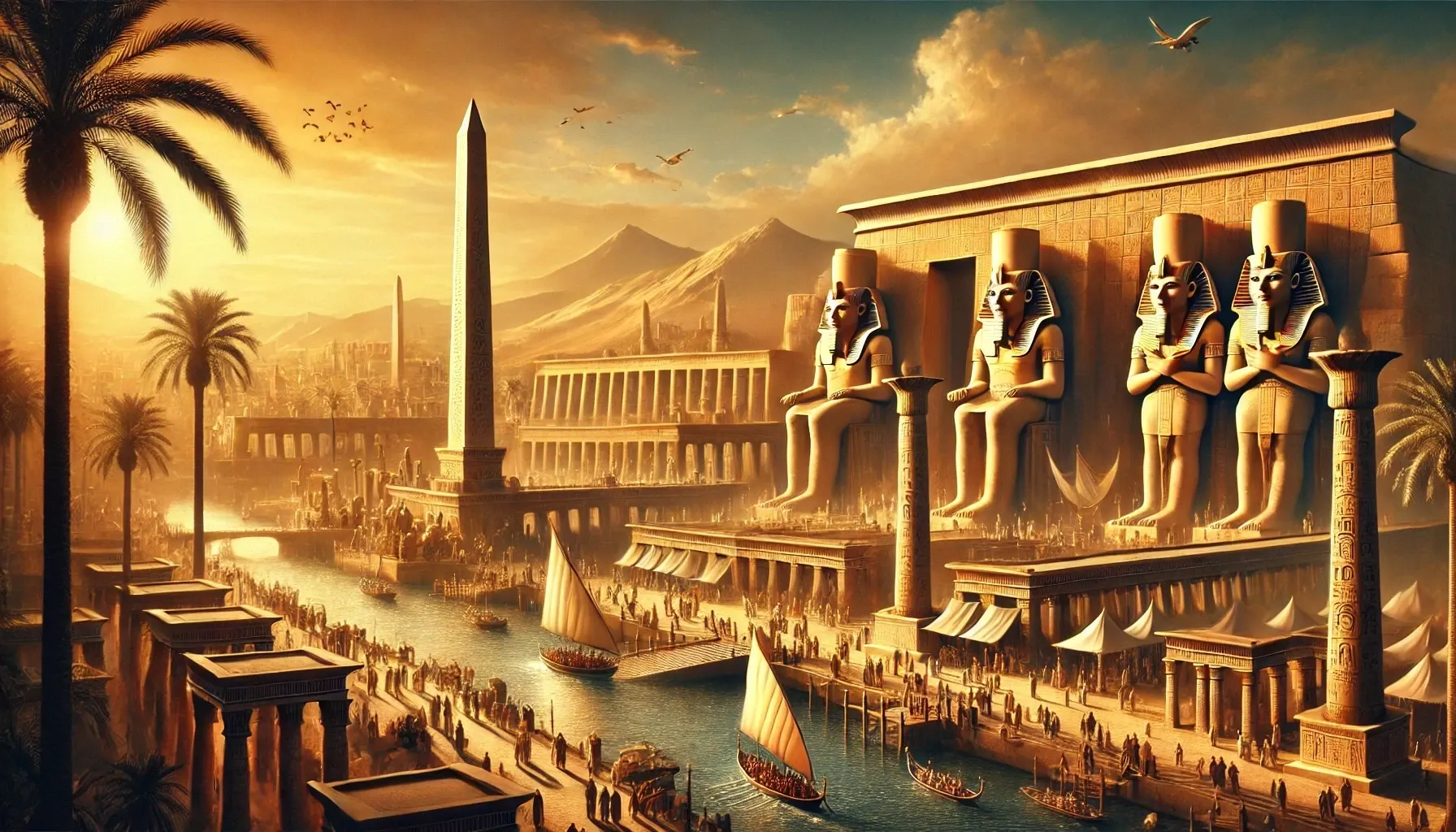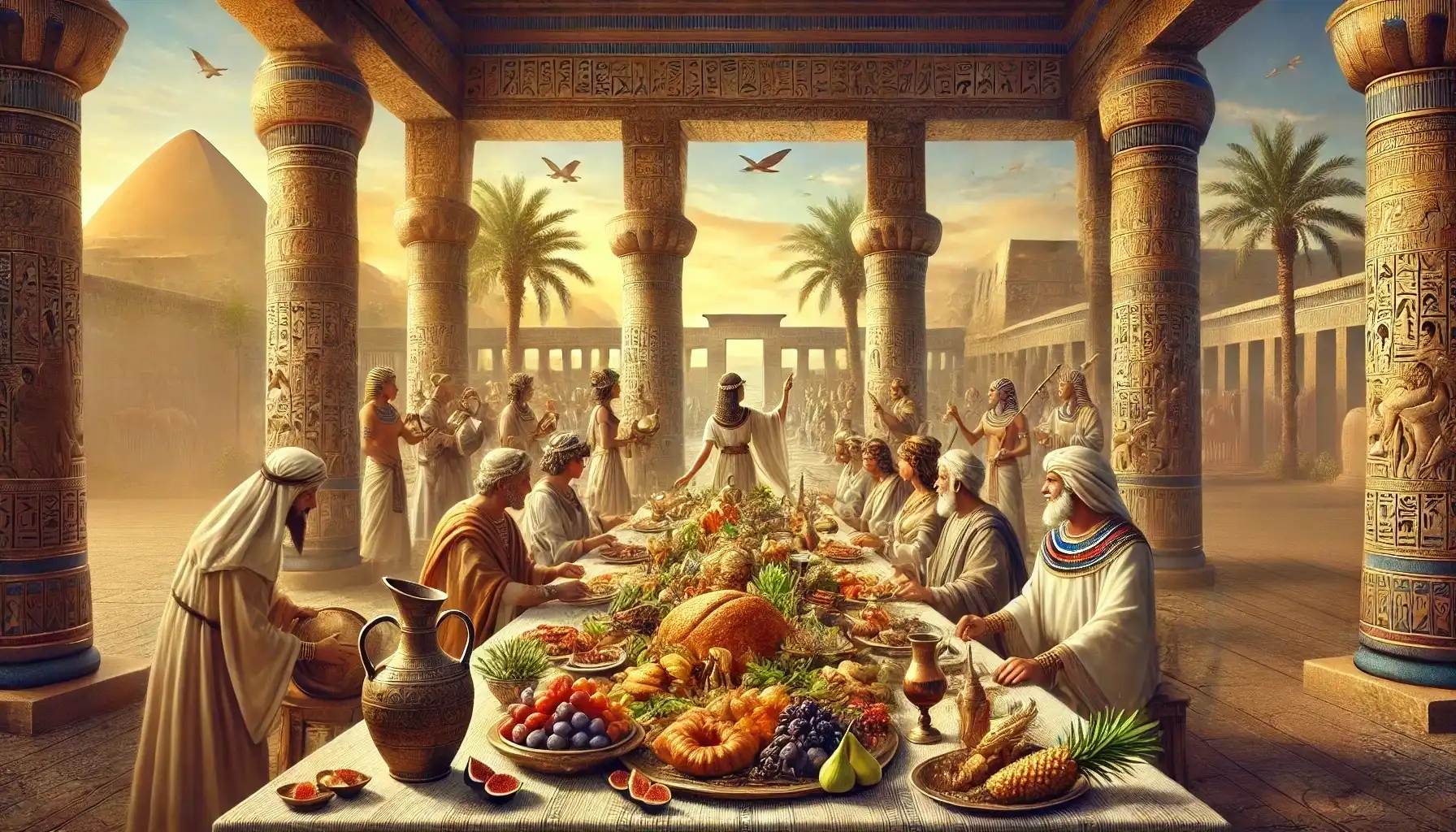The City of a Hundred Gates
Thebes, the city that straddled the life-giving Nile, was no mere collection of temples and palaces. It was an idea made stone—a sacred pulse in the vast body of Egypt. Homer called it the “City of a Hundred Gates,” and though his number may have been poetic exaggeration, it hints at the cities imposing presence in the ancient world. Its walls enclosed a civilization that flourished for millennia, a city where history and myth entwined like the twin banks of the river that sustained it.
Origins: The Dawn of Thebes
Long before its name was etched into the annals of empire, Thebes began as a modest settlement in Upper Egypt. By the Middle Kingdom (c. 2055–1650 BCE), it had eclipsed all rivals, emerging as Egypt’s religious and political heart. Why here, in the dry heat of the south? The answer lay in geography. The Nile’s steady flow ensured agricultural abundance, while the surrounding desert provided natural fortifications against invaders. It was a city poised between prosperity and protection, a perfect crucible for greatness.
The city’s patron deity, Amun, evolved from a minor god to the most powerful divine figure in Egypt, reflecting the cities own rise. As Pharaohs sought to consolidate their rule, Thebes became a beacon of state ideology, its priesthood growing in influence alongside its rulers. The foundations of its later grandeur were already being laid.
The Rise to Glory: The New Kingdom’s Jewel
The Reunification and the Hyksos Expulsion
Thebes’ true ascension came with the fall of foreign rule. In the 17th century BCE, the Hyksos, a mysterious people of uncertain origin, had seized the northern delta. But the city harbored defiance. It was from here that the warrior-kings Kamose and Ahmose waged their relentless campaigns, driving the Hyksos from Egypt and uniting the land once more. Their victory inaugurated the New Kingdom (c. 1550–1070 BCE), the golden age of pharaohs.
Ahmose’s successors expanded Thebes’ influence beyond Egypt’s borders, forging an empire that stretched from Nubia to the Levant. The wealth of these conquests flooded the city, funding the construction of some of the most awe-inspiring structures in antiquity.
The Age of Pharaohs and Gods
Under the sun-disc of the 18th Dynasty, Thebes blossomed into a metropolis of divine grandeur. The great warrior Thutmose III, the visionary Hatshepsut, and the enigmatic Akhenaten all left their mark. Temples soared, colossi watched the river, and processions of priests moved through the streets with solemn purpose. Thebes was not merely a city; it was the axis on which Egypt turned.
Hatshepsut, one of the few female pharaohs, left an indelible mark on the city with her mortuary temple at Deir el-Bahari, a harmonious blend of nature and architecture. Her ambitious reign saw trade routes extended and Thebes adorned with treasures from the land of Punt.
Karnak and Luxor: The Temples of Eternity
Karnak: The House of Amun
To step into Karnak was to step into a god’s dominion. Built over centuries, its towering pylons, colossal columns, and shadowed sanctuaries formed the most extensive temple complex in Egypt. Here, Amun, the supreme deity, was venerated in rituals that reaffirmed the pharaoh’s divine authority. The hypostyle hall, an architectural marvel of 134 massive pillars, still stirs awe, its carved inscriptions whispering tales of victories and offerings.
Successive pharaohs, including Seti I and Ramses II, added their own contributions to Karnak, ensuring its legacy endured. The temple complex became a living document of Egypt’s history, each ruler leaving their indelible mark in stone.
Luxor: The Pathway to the Divine
If Karnak was the seat of the gods, Luxor was the theater of their earthly procession. Connected to Karnak by the Avenue of Sphinxes, the Luxor Temple hosted the grand Opet Festival, a celebration that saw the statues of Amun, Mut, and Khonsu ferried down the Nile to renew cosmic balance. Even today, the temple’s pylons and statues stand as silent sentinels of Egypt’s ancient splendor.
The grandeur of these temples was not merely for show; they served as centers of administration, culture, and religion, where Pharaohs demonstrated their divine legitimacy and maintained Egypt’s cosmic order, or ma’at.
The Valley of the Kings: The Necropolis of Eternity
Across the river, Thebes’ necropolis housed the dead in tombs that defied mortality. Pharaohs, unwilling to tempt thieves with pyramid beacons, hid their burials in the Valley of the Kings. The most famous among them, Tutankhamun, slumbered in golden opulence, his tomb an untouched whisper of Thebes’ past grandeur. The walls of these tombs bore spells and visions from the Book of the Dead, guiding souls through the perilous underworld.
The valley also contained the resting places of powerful nobles and lesser-known rulers. The artistry of these tombs, filled with intricate frescoes and symbolic texts, reveals the depth of Egyptian beliefs about the afterlife and the journey of the soul.
Decline and Rebirth: Thebes’ Changing Fate
The Invasion of the Sea Peoples and the Twilight of Empire
Even the mightiest cities must bow to time. The collapse of the New Kingdom saw Thebes ravaged by war. The Sea Peoples, Libyan raiders, and internal strife weakened its dominance. The city endured, though its political power waned, eclipsed by the ascendant north. The Assyrians plundered Thebes in 663 BCE, a wound from which it never fully recovered. Yet, in a testament to its sacred gravity, it remained a religious beacon, drawing pilgrims and rulers alike.
The priests of Amun, wielding immense power, occasionally challenged the authority of the pharaohs, creating a theocratic rule in Thebes that would last into the Late Period. Though diminished, the city remained spiritually potent.
The Greek and Roman Eras: Thebes Remembered
Even Alexander the Great, in his conquest of Egypt, paused in the city, seeking favor from its ancient gods. The Ptolemies, Greek rulers who styled themselves pharaohs, honored its temples. When Rome absorbed Egypt, Thebes lingered as a cultural relic, its ruins inspiring awe even as its streets fell silent.
By the time of early Christianity, many of its grand temples were repurposed, but the echoes of its past continued to shape the imagination of travelers and scholars.
Thebes Today: A City in Ruins, A Civilization Alive
The city may have faded, but its legacy endures. Modern-day Luxor, built upon its sacred soil, thrives as a gateway to antiquity. Tourists walk where pharaohs once strode, gazing upon Karnak’s towering columns and the mortuary temples that defy the ages. The Nile still flows, carrying echoes of processions past.
In Thebes, time bends. The city of the living and the city of the dead coexist, and the gods of old have not entirely vanished. They linger in hieroglyphs, in temple shadows, in the golden masks of kings who once called this place home. Thebes is not gone; it is waiting to be remembered.



